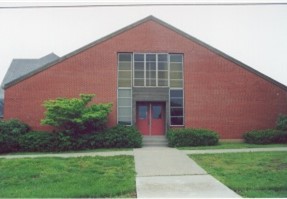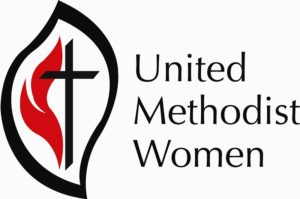1970-1979 Continued
Protests against the Vietnam War erupted on college campuses. In 1972, the new Kansas City International Airport opened as well as Arrowhead Stadium. The following year the Kansas City Royals began playing in their new stadium next door. In 1976 Richard Nixon resigned as President of the United States. By 1979 the high cost of energy was driving a binge of double-digit inflation worldwide.
By the early 70’s, the crowded conditions at the church demanded more space. This time the need was for Church School classes. In November 1971, ground was broken for the new education building which was later named Hobbs Hall in memory of Dr. Samuel Hobbs who gave the land for this church in 1851. The building was completed in May 1972, adding 8,760 square feet of usable space to the existing 37,240 square feet, making approximately 46,000 square feet in the church complex on 51st Street and Blue Ridge Boulevard. This did not include the brick house across 51st Street which was used from December 1965 to May 1972 as Church School classrooms for the youth. When Hobbs Hall was completed, the Youth House was no longer needed for Church School. It was then used by the many Scout groups sponsored by the church, thereby, relieving the wear and tear on the church complex.

The exterior of Hobbs Hall was red brick. Both the material and architecture blended well with the other buildings of the church complex. Tom Nelson of the Patty, Nelson, Love Architect Firm was the architect. The building committee was D. Russell Lytle, Paul Hostetler, John Hammons, Harold Howard, Don Pellow, Byron Oster, and Grady Truitt. This building committee acted as its own general contractor with members of the church doing much of the work themselves, thus saving a large sum of money. The cost was $120,000. The value upon completion was $180,000. This $60,000 difference was very significant during the 1971-72 inflation period.
Hobbs Hall included a recreation center and classrooms which would serve about 225 of the 600 children, youth, and adults involved in Church School. All fifth and sixth graders plus the youth classes met in the building. There was now space to provide two classes at each grade level. Another constant need was the need for teachers in those classrooms. Marge Lytle, an experienced Christian educator, took a great leadership role in this area. When Marge called and said she had been praying about a certain class and she felt you would be the perfect one to teach those children, it was very difficult to say no. Many adults who had no plans to teach, found themselves still in the classroom five, ten and even fifteen years or more because they loved the experience of working with the kids. A great deal of teacher training was given and the leadership in the children’s division gave teachers wonderful support. During the mid-70’s, the Suzie J.C. Pre-school, a self-supporting school for special needs children, held daily classes there. As membership changed the fifth-grade students were returned to the church for classes. Sixth graders became part of the youth group when the school system changed from Junior High to Mid-High. The youth met downstairs while the upstairs was used for the Special Education Class and various adult classes.

Early in 1972, all United Methodist women were given an opportunity to choose a name for the one inclusive organization of Methodist Women. The name chosen was United Methodist Women. In December 1972, the Women’s Society of Christian Service and the Wesleyan Service Guilds were restructured to operate as one inclusive organization of Methodist Women. The first UMW President at Blue Ridge was Frances Dickson. In 1978, Frances was President of the Missouri West Conference UMW and later served on the Women’s Division of the Board of Global Missions. Frances was also instrumental in starting the publication, The West Wind, which shares the news of the district with all the members in the local church.
In April of 1972, the parsonage at 11223 East 48th Street was sold and the Coopers, who were living in the old parsonage, moved to the new one at 12128 East 49th Street. In July of 1972, Missouri Bishop Eugene M. Frank was assigned to another Episcopal area. Bishop Robert E. Goodrich, Jr. was appointed to this post to succeed Bishop Frank.
Blue Ridge United Methodist continued to grow and younger couples with children fueled a need for church schoolteachers, youth activities, and new programs. In 1972, Reverend Blackford returned to his Oklahoma Conference and Jim McCombs, a student at St. Paul School of Theology, was hired as a part-time Education Director. In 1973, he became the full-time Minister of Education. After serving at Blue Ridge for five years, Reverend Joe Cooper was appointed to the Oakley United Methodist Church. Gil Evans, a licensed lay preacher, assumed the position of Assistant for one year and in 1976, Reverend Steve Cox, coming from Grain Valley, is appointed as the Associate Minister. He and his family lived in the house on 49th Street and a parsonage was purchased in 1977 at 7232 Crisp for the McCombs’ family.
In 1973, under the leadership of Reverend McCombs, Edna Scahill and Edra Penny, the Golden Key was started. This organization enabled the senior citizens of our congregation to meet monthly for a dinner, a program, and fellowship together. This is still a vital, active group today.
In 1976, Reverend McCombs and other adult volunteers took a group of Senior High youth to Hannibal, Missouri for a Work Camp. This is a tradition that continues today–26 years later. During this time the trips have taken young people all over the country—from Kentucky, to Colorado, to Louisiana, to Oklahoma, to Wisconsin, as well as many other locations around the country. In 1984, it was decided to have a Work Camp for Mid-High youth. They would travel to locations within Missouri or to a near-by state. This camp would be shorter but would give the youth excellent work experience to prepare them for joining the Senior High youth when they were older. Over the years, our group of young people have built a reputation for being loving, caring, hard-working youth. They have made a difference in the lives of many adults and children as they have repaired homes, churches, and community centers. In 1995, several adults went to Red Bird Mission in Kentucky for the first Adult Work Camp. They have continued that tradition by traveling to various location to serve in this special way. In 1997 and 1998 some college students went on a Work Camp to Fort Worth, Texas and to Camp Galilee.
In 1978, Reverend McCombs left Blue Ridge to become the Associate Minister in Clinton, Missouri. Cheryl Barnard, a Diaconal Minister, was hired as Minister of Education. Diaconal Ministers are full-time lay people, certified and employed by the United Methodist Church. Diakonia is a Greek word from which a well-known word “deacon” is derived. The Greek meaning is simple, “to serve others”; and therefore, the title Diaconal Minister.
In 1979 Reverend Cox was appointed to Booneville, Missouri, and Reverend Fred Bowers served Blue Ridge in 1981 and 1982 as the Associate Minister. In 1980, Reverend William Handy becomes the Missouri Bishop.
In 1980, after being at Blue Ridge United Methodist for 13 years, Reverend Russell Lytle retired. He and his wife, Marge, had made a terrific difference in the life of this church leading it through a time of great growth. Reverend Gene Atkins from Kingsway United Methodist Church in Springfield, Missouri was appointed to Blue Ridge. Reverend Bill Billings came as his Associate.
